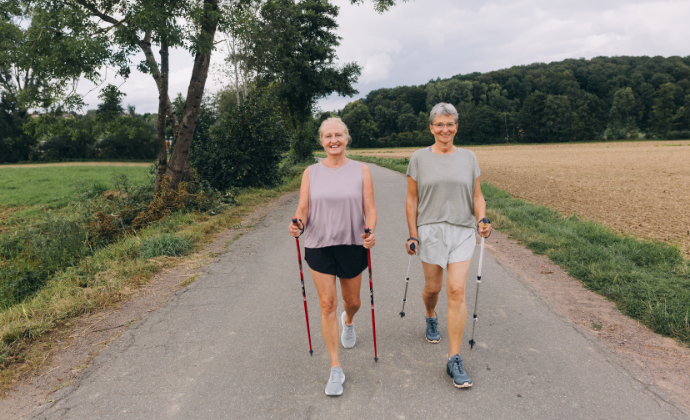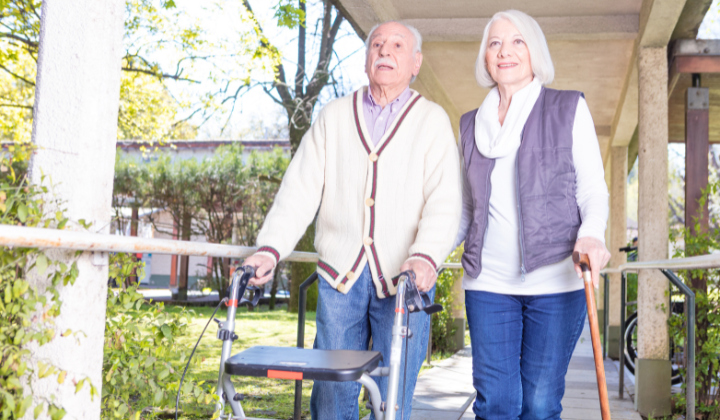How Often Should You Change Your Exercise Routine with Parkinson’s?

Communication Tips for Family and Friends if Your Loved One has Parkinson’s
17th April 2025
Take 5 April
17th April 2025How Often Should You Change Your Exercise Routine with Parkinson’s?

How Often Should You Change Your Exercise Routine with Parkinson’s?
Neuro physiotherapist Josefa Domingos gives expert advice on when and how often you should change your Parkinson’s exercise routine.
Parkinson’s can be an unpredictable and ever-changing condition, so getting your physical activity at a level that works for you can be an ongoing challenge, and leave you asking: “When and how often should you change your exercise routine?”
As an experienced neuro physiotherapist specialising in Parkinson’s and other movement disorders, our Josefa Domingos has spent the last two decades helping people with Parkinson’s to answer that very question, so we asked her for her expert tips:
What reasons are there to change your exercise routine?
“Here are some criteria I suggest people use to assess whether their current exercise routine remains beneficial and if changes are needed:
- When it is no longer effective for their current health needs or goals
This means that either a) the patient and/or family don’t perceive any benefits, b) the person feels bad after exercise, or c) it doesn’t help to achieve the person’s goal.
- When it is no longer safe
For instance, if a person feels unease during the activities and feels worse afterwards.
- When they believe they can’t do it
For instance, because of their skill level or health status.
- When they stop enjoying it
- When it’s no longer accessible
For reasons like time, location, costs, and how sustainable your routine is.
- When scientific evidence identifies safety issues with your current choice of exercise“
7 questions to ask yourself before changing your exercise routine
“The question of how often to change your exercise routine depends on many factors, so I recommend regularly asking yourself the following questions to help ensure that your current activities align with your needs and safety:
- Am I enjoying this?
Does the activity bring you joy, or is it causing stress or discomfort? Exercise should be something you look forward to.
- Is it safe for me?
Consider the safety of the environment, the intensity of the exercise, and whether you’re using proper techniques. Is there a risk of falling or injury?
- Am I noticing positive changes?
For instance, are you experiencing improved mood, energy levels, balance, or overall quality of life?
- Do I have the right support?
Support is crucial to maintaining an exercise routine successfully. Do you have a workout buddy, trainer, or group that provides encouragement and assistance when needed?
- Is my routine flexible enough to adapt to my needs?
Can you adjust your exercise schedule or modify activities if your symptoms change or medication timing varies?
- Does it align with my health goals?
Are the activities you’re doing helping you reach your fitness or mobility goals, or do you need to adjust your routine?
- Am I taking adequate rest and recovery time?
This is so important. Are you allowing yourself enough time to rest and recover between sessions to avoid overexertion and burnout?
What are the criteria for changing from high to low intensity exercise?
I would use the same questions as I suggested for the need for a change in general (see above).
Should people with Parkinson’s who want to take up a new sport seek medical advice first?
Yes, it’s highly recommended. All exercise guidelines suggest undergoing a full medical assessment before beginning any new sport or exercise program. This is especially crucial for people with Parkinson’s due to the potential impact of symptoms on physical activity.
If you can’t get an assessment immediately, make it a priority to schedule one as soon as possible to ensure that you’re taking up the new sport safely and with the right precautions in place.
Sources:
Original article by Laura Vickers-Green



